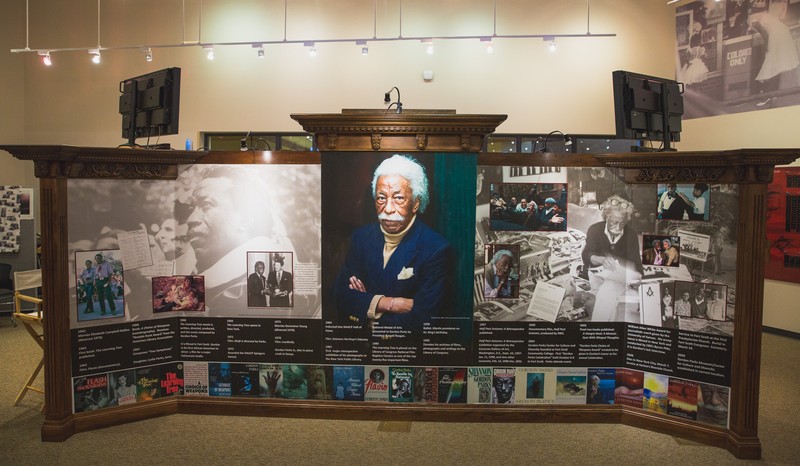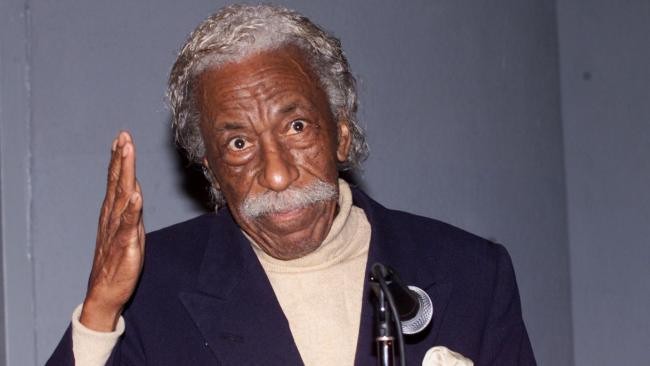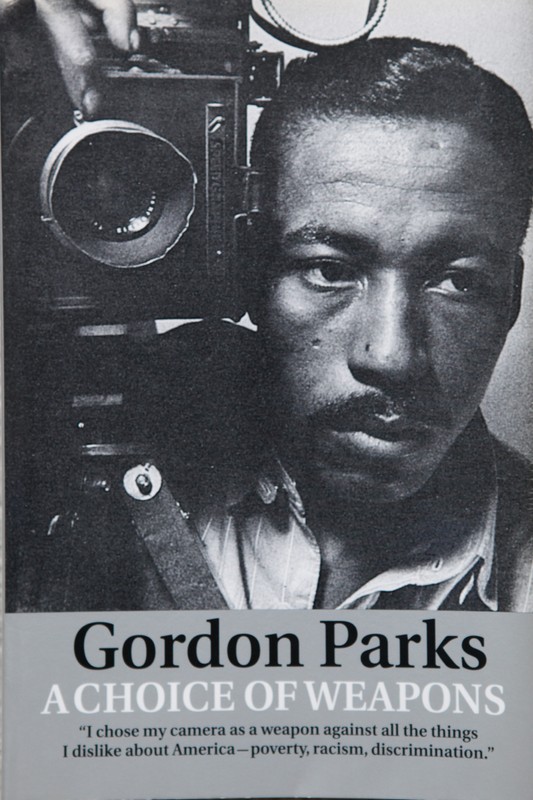Gordon Parks Museum/Center
Introduction
Text-to-speech Audio
The Gordon Parks Museum, located on the campus of Fort Scott Community College in Fort Scott, offers a collection of photographs and other artifacts related to the life of internationally known photographer, filmmaker, writer, and musician, Gordon Parks. The museum also offers programming related to the life and legacy of the former Fort Scott resident. The center also shares Parks' life story of his family's poverty and bigotry while in southeast Kansas and how the experience shaped his work.
Images

Gordon Parks, the namesake of the museum.


Backstory and Context
Text-to-speech Audio
Gordon Parks was a Renaissance Man – an internationally known photographer, filmmaker, writer and musician who discovered a passion and appreciation for photography while working as a waiter for the railroad in the 1930s. While on a work break, Parks became mesmerized with photographs in a magazine taken by photographers working for the Farm Security Administration (FSA), including Dorothea Lange and Walker Evans. These images in the magazine and a chance visit to the Chicago Art Institute during a railroad layover cemented a lasting admiration of photographers and fueled Parks’ hunger, focus, and determination to become a photographer himself.
During another railroad layover in Seattle, Parks made a purchase at a pawn shop that would forever change his life and launched his quest to fight against racism, discrimination, and poverty with his weapon of choice: a $12.50 camera.
In Parks’ early career as a photographer, he often took photographs of fashion models but in 1942, while working for the FSA, he took the photograph that helped introduce the world to his fight against social and economic injustices. This photograph titled American Gothic uses the same name of the well-known Grant Wood painting of the stoic man holding a pitchfork beside a woman in front of a farmhouse. In Parks’ version, the photograph features Ella Watson, a charwoman – a part-time janitor in today’s language – while she was working late one night at the office of the FSA in Washington D.C. She is shown standing in front of the American flag holding a broom and a mop.
The images Parks took during the civil rights movement and in the segregated south showed the world the true realities of his subject matters. The photographs are striking, harsh reminders of the struggle for freedom and equality and leave a lasting impression in hopes history is not repeated. Parks was a champion in fighting against social injustice and racism worldwide.
Yet Parks’ photographs capture astonishing images of beauty as well. “The camera is not meant to just show misery,” said Parks. “You can show beauty with it; you can show things you like about the universe, things you hate about the universe. It’s capable of doing both.”
In 2004, Gordon Parks attended the first ever Gordon Parks Celebration where he gifted the Gordon Parks Center with 30 of his photographs. This spectacular group includes many of his iconic works such as American Gothic, Tuskegee Airmen, Flavio, Ali Sweating, Ingrid Bergman on Stromboli and many others.
In 2006, after his death, his personal effects and other memorabilia, per Gordon’s wishes, were given to the Museum. This valuable collection included many of his awards and medals, personal photos, paintings and drawings of Gordon, plaques, certificates, diplomas and honorary doctorates, selected books and articles, clothing, record player, tennis racquet, magazine articles, his collection of Life magazines and much more. At that time, the Gordon Parks Center was fortunate to acquire his writing desk from a donation given by Bill and Camille Cosby.
Since that time, more gifts have been given by his family and friends such as his camera, gifted by his daughter Toni Parks; his film camera and tripod, donated by his son David Parks; a collection of photographs of Gordon donated by Patricia DuBose Duncan, and much more. These gifts have made this collection substantive and significant and we are proud of Gordon’s faith in us to preserve and protect his legacy.
Sources
https://www.gordonparkscenter.org
Sharp, Kirk. Seeing the World Through the Eyes of Gordon Parks, Humanities Kansas. November 2nd, 2020. https://www.humanitieskansas.org/get-involved/kansas-stories/the-big-idea/big-idea-seeing-the-world-through-the-eyes-of-gordon-parks.
